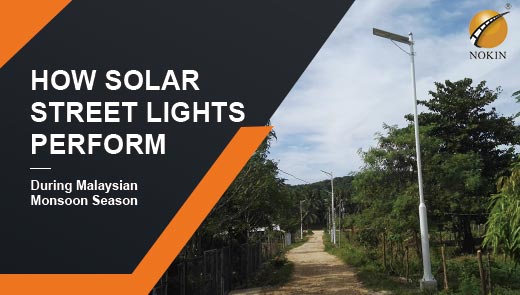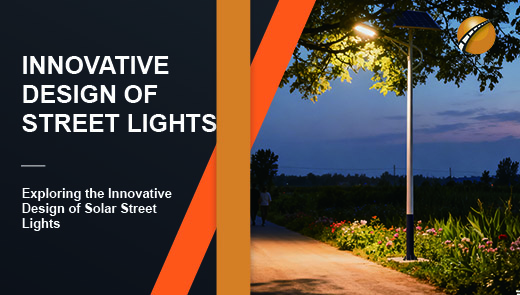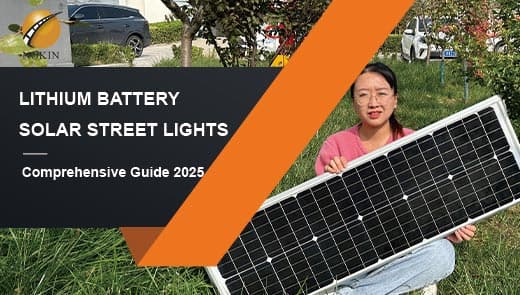Advantages and Disadvantages of Solar Street Lights with Motion Sensors
At a time when the demand for urban construction and rural lighting is rising, how to select a suitable motion sensor street light has become the focus of attention for many municipal projects, property managers and outdoor lighting demanders. In this article, we will discuss the relevant knowledge of motion sensor street light, to provide you with professional shopping guide.
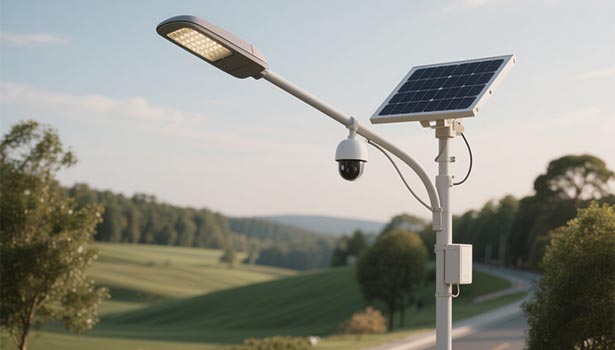
What is a Solar Street Light with a Sensor?
Motion sensor street light, i.e. solar street light with sensor, is an intelligent lighting device relying on solar power. It has a variety of built-in sensors, and can realize automatic switching off and on without frequent manual operation, which greatly improves the convenience of use and the degree of intelligence.
PIR Motion Sensor
PIR (Passive Infrared) motion sensor is one of the core components of the motion sensor street light. Based on the principle of infrared detection, it is extremely sensitive and can accurately detect subtle human or object movements, thus realizing the automatic switching of lights. At the same time, its unique design can effectively filter animal activities, passing vehicles and other interfering factors to avoid false triggering of the street light. Even in complex outdoor environments, whether it is a small pet shuttle, or a vehicle driving by quickly, PIR motion sensor can rely on its own intelligent algorithms to accurately distinguish between effective movement signals and interference signals, so that the street light is always maintained in a stable and reasonable working condition.
Dusk to Dawn Sensor
Dusk to dawn sensor can automatically turn on the street light at dusk and turn off the street light at dawn according to the change of ambient light. This feature perfectly solves the problem of forgetting to manually control the switching of lights and ensures that the street lights work stably during the time when they need to be illuminated.
Light Sensor
The Light Sensor automatically adjusts the brightness of the street light at night. When no one or vehicles are passing by, the brightness will be lowered appropriately, which can save energy and avoid the interference of strong light to the residents' rest; when activity is detected, the normal brightness will be restored in time to ensure the lighting demand. It realizes adaptive lighting changes by intelligently sensing the dynamics of the surrounding environment and combining with preset brightness adjustment strategies. For example, when pedestrians are scarce late at night, the street light automatically reduces its brightness, reducing energy consumption and avoiding light pollution; and when pedestrians and vehicles are close by, it can quickly increase its brightness to provide clear lighting, taking into account both energy saving and practicality.
How Does a Solar Street Light with a Sensor Work?
Solar panels absorb the sun's radiant energy during the day and convert it into electricity, which is stored in the batteries equipped in the street light. When night falls, the light sensor detects the darkness and triggers the LEDs to turn on. At this time, the PIR motion sensor starts to work, once an object is detected to move, the street light maintains full brightness; when the object leaves, after a period of time, the street light automatically reduces the brightness or turns off, realizing intelligent lighting.
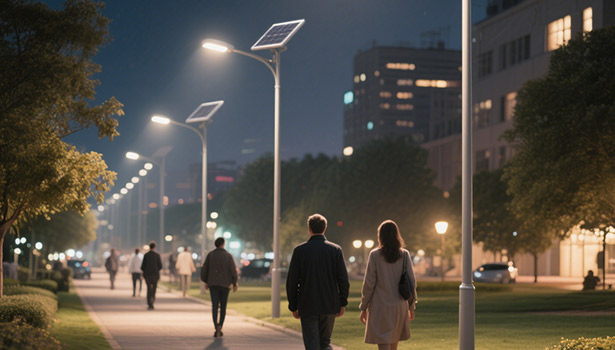
Solar Street Light with Motion Sensor Advantages
Energy Efficiency
Unlike the traditional street light that stays on all night, the motion sensor street light illuminates at full power only when it detects an object moving, which greatly reduces energy waste. Its built-in smart chip can adjust the brightness in real time according to multi-dimensional data such as ambient light and darkness and human traffic. For example, when no one is around late at night, it automatically adjusts the brightness to a low level to maintain basic lighting, which not only reduces energy consumption, but also prolongs the service life of batteries and lamps by reducing the duration of high-load operation of components.
Cost Savings
On the one hand, the solar-powered model eliminates the reliance on the traditional power grid and significantly cuts down on electricity bills; on the other hand, the application of motion sensors avoids unnecessary lighting and further saves energy costs. On the other hand, the application of motion sensors avoids unnecessary lighting, which further saves energy costs. For example, after adopting this type of street light, the annual expenditure on electricity can be reduced by more than 60% in a city's main road. In addition, the long lifespan of LED bulbs and the high efficiency of solar panels reduce the maintenance frequency of streetlights, effectively saving labor and material costs, and eliminating the need for large-scale replacement of fittings within 5-8 years.
Increased Brightness When Needed
When detecting pedestrians or vehicles approaching, the motion sensor street light will automatically increase the brightness to provide a clear lighting environment for pedestrians and vehicles, reducing safety hazards. This feature uses a millisecond response mechanism to increase the brightness to 100% the moment the target is detected, and with the wide-angle illumination design, it can cover a radius of 15 - 20 meters. The bright light not only makes it easier for pedestrians to see what's going on, but also serves as a deterrent to potential intruders, enhancing area security.
The Real-time Monitoring Function of the Enhanced Security
Motion sensor allows the street light to come on in time when there is activity, providing illumination for the area. Even in the event of a power outage, the solar-powered streetlights will continue to function and provide continuous monitoring. Its energy storage system can support stable operation for 3 - 5 consecutive cloudy and rainy days, and with the HD camera linkage program, it can record abnormal activities in real time. Good lighting conditions also reduce the hiding space for criminal activities, making residents and pedestrians feel safer when traveling at night.
Reduced Light Pollution
Traditional streetlights are fully illuminated throughout the night, scattering a large amount of light into the sky, causing serious light pollution and affecting the ecological environment and astronomical observation. The motion sensor street light adopts a dynamic lighting mode, providing the right amount of light only when necessary, which effectively reduces light pollution and protects the ecological balance.
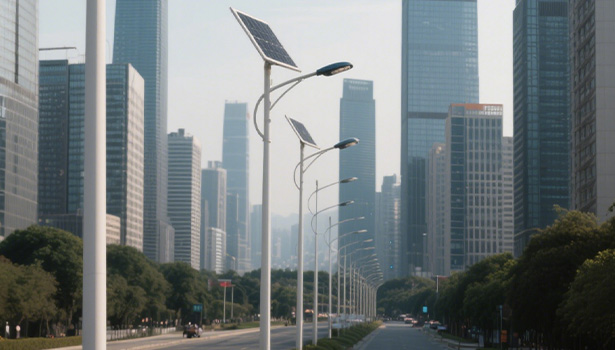
Solar Street Light with Motion Sensor Disadvantages
Relatively High Cost
Due to the need to integrate motion sensor and corresponding control system, the initial purchase cost of motion sensor street light is 10% - 20% higher than that of ordinary solar street light, which is a factor to be considered by purchasers with limited budget. This is a consideration for purchasers with limited budgets. In addition to the cost of hardware integration, the development and commissioning of the intelligent control system, as well as software upgrades and maintenance at a later stage, further increase the overall investment, making the procurement threshold relatively high.
Environmental Restrictions
In urban areas with dense high-rise buildings or lots with a lot of trees, the signals from motion sensors may be blocked or interfered with, resulting in a decrease in their sensitivity and affecting the normal working effect of the street lights. For example, in neighborhoods with small spacing between buildings, building shadows and structures can weaken the detection range of the sensor; and in areas with dense trees, swaying branches and leaves can easily block the signal transmission, reducing the reliability of the lighting system.
Possible False Triggering
Small animal activities, wind-blown leaves and other situations may cause the motion sensor to misjudge, triggering the street light to adjust the brightness frequently, which not only affects the lighting experience, but also shortens the service life of the street light. Especially in ecologically sound areas, frequent movement of small animals at night or swaying of vegetation in windy weather can cause streetlights to switch on and off repeatedly, accelerating component wear and increasing the risk of failure.
How to Choose the Right Solar Street Light with Sensor?
The Type and Quality of the Light Source
LED (light-emitting diode) light sources are ideal for motion sensor street lights because of their excellent performance. Compared with traditional metal halide lamps, high-pressure sodium lamps, LED light source has a higher luminous efficiency, higher brightness under the same power; life expectancy of up to 50,000 hours or more, far more than the traditional light source; and lower energy consumption, energy-saving effect is remarkable.
|
Color Temperature |
Features |
Suitable Applications |
|
Around 3000K (Warm Tone) |
Creates a cozy and comfortable atmosphere |
Parks, residential pathways, and other leisure areas |
|
Above 5000K (Cool Tone) |
Bright and clear light with high contrast |
Main roads, parking lots, and areas requiring high visibility |
Color rendering index (CRI) reflects the ability of the light source to restore the true color of the object, the higher the value, the more accurate color reproduction, it is recommended to choose CRI ≥ 80 street lamps to protect the good lighting effect.
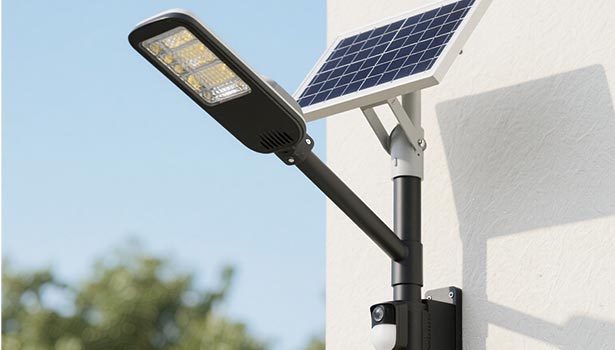
The Type and Quality of the Motion Sensor
Common sensor types and features:
|
Sensor Type |
Working Principle |
Advantages |
Limitations |
|
PIR Sensor |
Detects changes in infrared radiation emitted by objects |
High sensitivity, low power consumption |
Affected by temperature and obstructions |
|
Microwave Sensor |
Detects motion by emitting and receiving microwave signals |
Strong penetration, unaffected by light |
May cause false alarms |
|
Ultrasonic Sensor |
Uses ultrasonic wave reflection to detect objects |
Fast response time |
Limited detection range |
|
Hybrid Sensor |
Combines multiple sensor technologies |
Excellent overall performance, adaptable |
Higher cost |
High-quality motion sensors should have high sensitivity, wide detection range, high reliability and strong anti-interference ability. In the selection, need to pay attention to the sensor's detection angle, detection distance and other parameters, and understand its working stability in different environmental conditions.
The Type and Quality of the Controller
Controller can be divided into wired and wireless, independent and integrated, manual and automatic, simple and intelligent and other types. Wired controller is highly stable, but the installation flexibility is poor; wireless controller is easy to install and adjust, but there may be signal interference problems. Independent controllers are relatively single-function, while integrated controllers can realize more intelligent functions.
An excellent controller needs to have stable software algorithms, reliable hardware architecture and advanced firmware programs. It should be able to achieve efficient communication and cooperative work with motion sensors and light sources, and at the same time provide a simple and easy-to-use interface and a wealth of customizable features to meet the individual needs of different users.
Selecting a motion sensor street light requires comprehensive consideration of its defining characteristics, advantages and disadvantages, as well as key elements such as light sources, sensors, and controllers. Through in-depth understanding and careful comparison of these aspects, combined with the actual use of scenarios and budgetary situation, in order to select a good performance and cost-effective motion sensor street light, to provide safe, energy-saving, intelligent lighting solutions for lighting areas.

